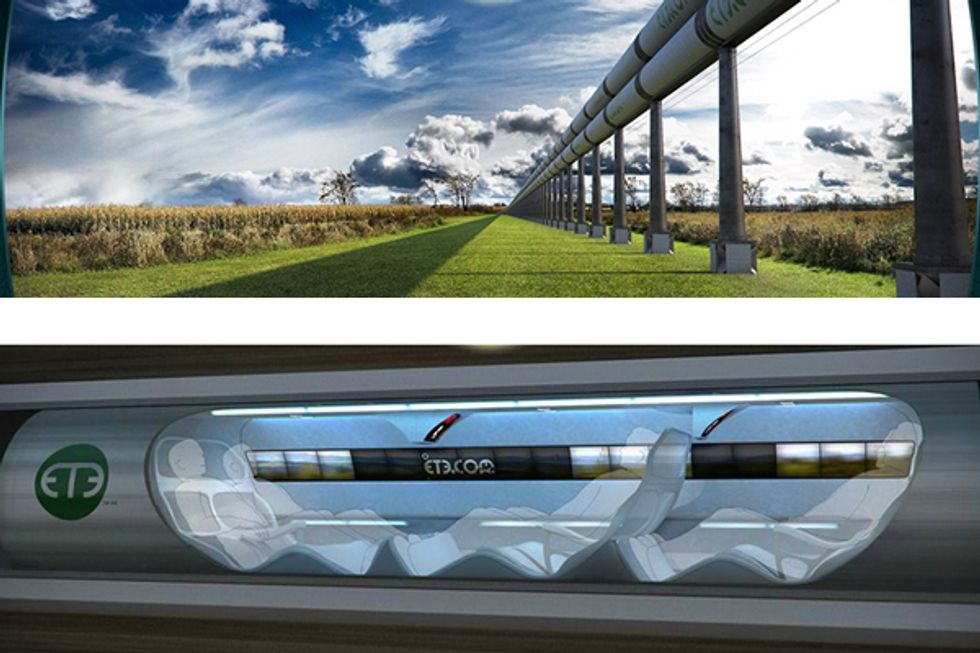If you don’t know much about the Hyperloop -- the proposed high-speed transportation system that’s got California travelers buzzing this past month -- there’s plenty to like about the idea. In theory, the design would revolutionize travel. Picture yourself sitting in a aerodynamic pod (roughly the length of a bus) flying 800-MPH through a series of advanced-engineered tubes traveling between San Francisco and Los Angeles. Oh yeah, and the trip would only take 35 minutes.
SpaceX founder and Hyperloop imagineer Elon Musk is the ambitious engineer behind the transportation project. He first revealed his plans on Aug. 12 as a retort to California's proposed $70 billion high-speed rail system, but later said that his idea could be adapted across the world, connecting large cities that are, at most, 900 miles apart.
Unfortunately, there are plenty of design flaws (that are no better summed up than by Jon Oliver from The Daily Show). These include everything from emergency exits and zoning permits to convincing people to travel up to speeds that might be considered inhumane at ground-level. And Musk is too busy to tackle the “manifold and difficult” problems associated with “evacuated tube technology,” the very thing that powers the aerodynamic pod 800-MPH.
So why talk about an idea that’s been abandoned by its own inventor?
Not everyone is abandoning the idea. Daryl Oster, CEO of a company called Evacuated Tube Transport Technologies (ET3) has a vision -- a monstrous one at that -- to shape the Hyperloop into his own idea and turn it into a reality. So far, he’s landed on three key distinctions from the Hyperloop: a smaller tube diameter, a smaller traveling pod and something called high-temperature maglev technology.
What’s left is a 4’3’’ high and 16’2’’ long capsule (about the size of a midsize sedan) running at jet-aircraft speeds through a series of narrow tubes. The high-temperature maglev powers the capsule through evacuated tube transport, a vacuum that could literally suck the life out of you. But it won’t. In fact, it will feel like you’re floating in space, according to Musk.
And the benefits are immense. In theory, the transportation system will be 50 times more efficient than the best electric cars and bullet trains on the market. It will also drastically cut down on heat, chemicals, noise and other pollutants that riddle the atmosphere.
Sure, the Hyperloop is a wild idea. But Musk is up to the task. Currently, he’s working on securing a site for a 3-mile ET3 test run and hopes to break ground at the end of 2013. And for the sake of travelers everywhere, we hope he does so successfully.
Follow @NickTrenchard for your inside scoop on all things Bay Area tech





















